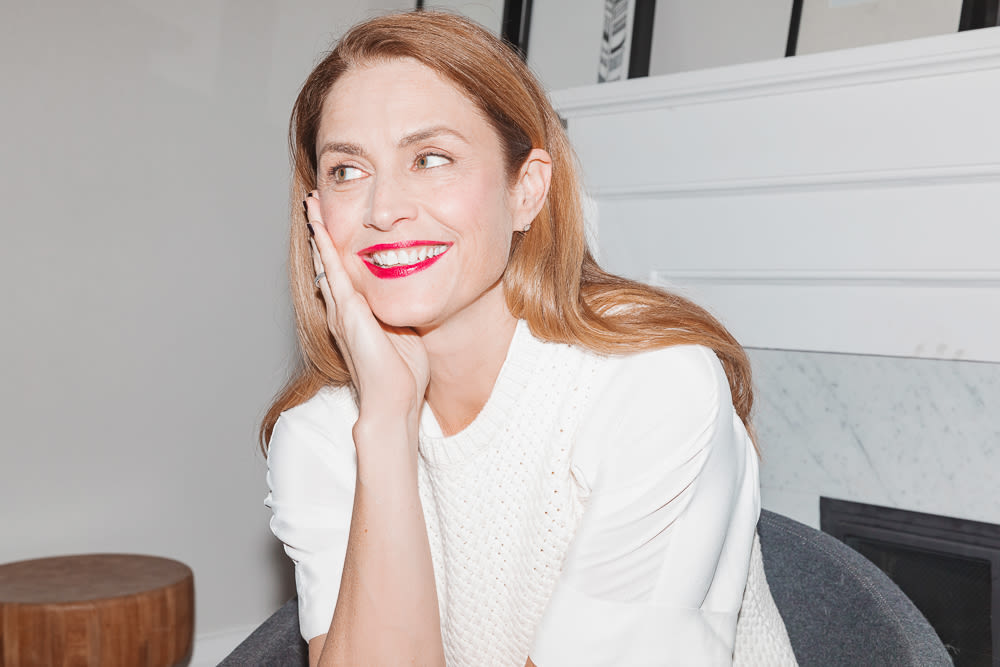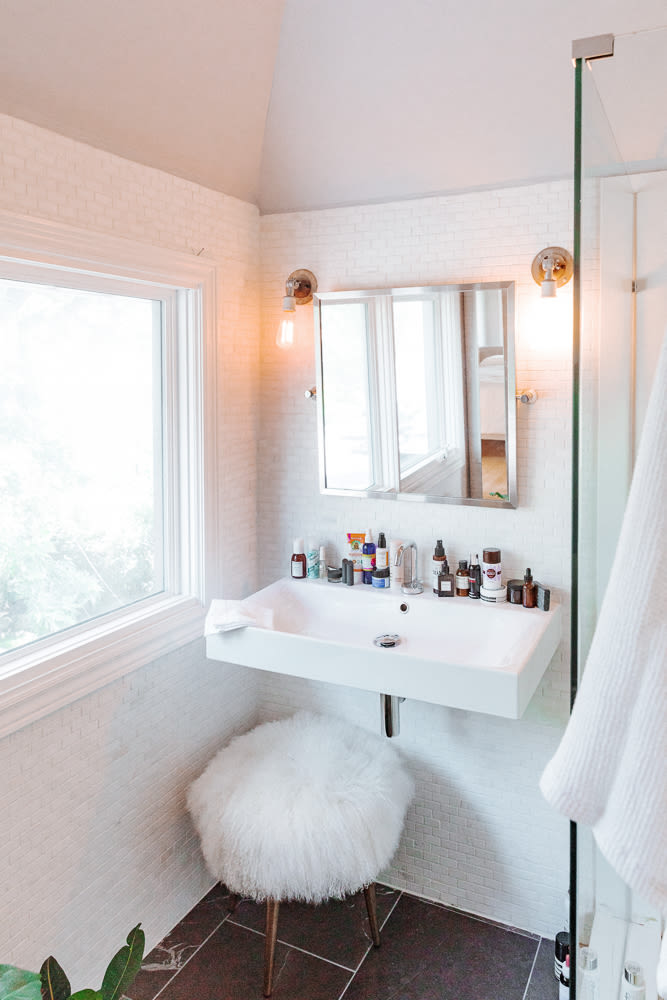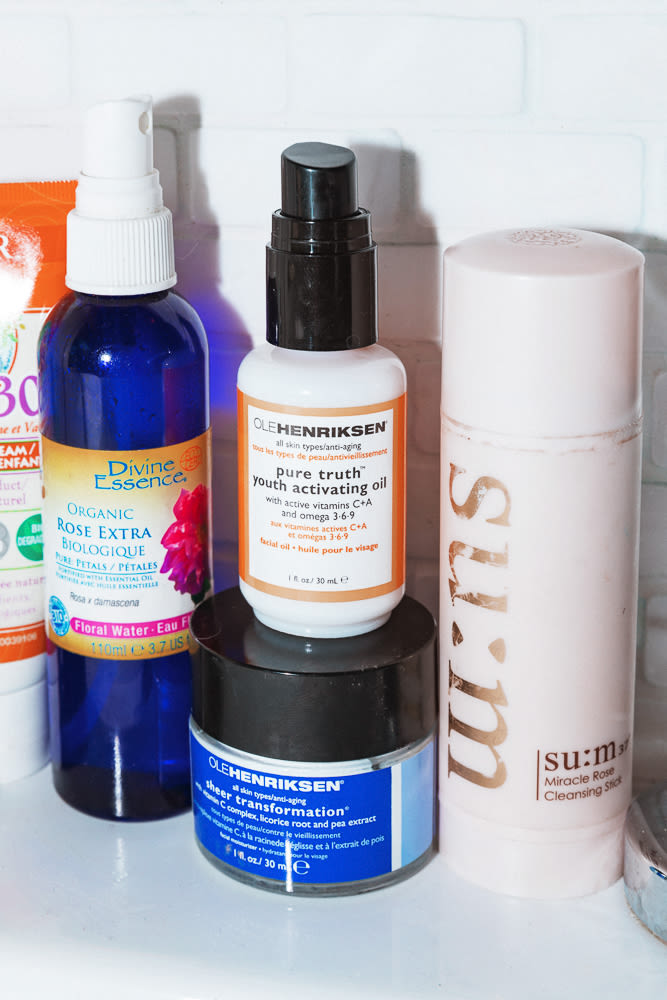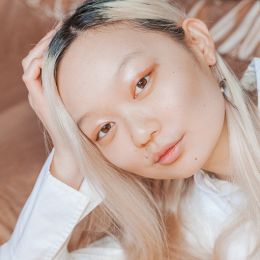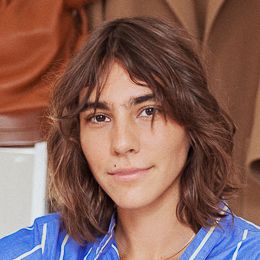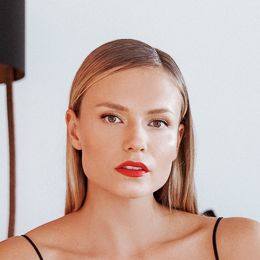“I grew up just outside of Toronto, in Mississauga–I lived in Caledon as a kid. It was a very small town, a couple kilometers from anything. I had no idea what I wanted to do in high school—but I knew I wanted to start a business. First I studied how to color hair at Schwarzkopf, so I became a color technician and I wanted to open my own hair salon. And I had 1800 hours at Brunel School Hair Zone, so I can do all sorts of things I will never have to concern myself with, but the color I was very fascinated with. But the chemicals were so harsh. Eventually I had to get out of there because I had rashes all over my arms. And I didn’t love the experience of starting at the bottom, to be honest. Because after going to school and feeling like I was really comfortable with color, I was still getting coffee and shampooing.
After that, I went traveling. I went to Peru on an archeological dig, and then through Asia and Europe. I hadn’t left Canada much before that. You know, now you can Uber most places in the world, and you can book online, and there’s AirBnB… It’s very easy to get around. Whereas before, you had to book everything in advance or just wing it when you got there. I did a lot of winging it. That’s when I started sourcing essential oils and aromatics. Lavender could help me sleep, tea tree was a great antibacterial… Sourcing also provided me with an opportunity to keep traveling, and to go to these amazing places all over the world, work with farmers and producers directly, and then sell the best stuff back in Canada. I started selling essential oils in a kiosk in Vancouver, about 20 years ago, by myself. At that time, lavender was the only thing that had some credibility, and the rest was really potpourri–really expensive fragrance oils. After 10 years of that, I started doing product development.
Organic wasn’t a big deal then, but to me it made sense. I was a little bit of a hippie, because with traveling, you’re carrying everything. It’s always in a small bag or backpack. That was before suitcases with four wheels–which, I want to meet the person that finally figured out how to do that, because up until 15 years ago, suitcases had two wheels, and that was not what you traveled with. [Laughs] So for me, the experience of having to carry stuff with me made me think about the actual ingredients you wanted to carry with you and cook with and use on your body. Lipstick was the one beuaty product that I always carried with me, because it was really easy to bring.
Eventually I had the cash flow to start my own brand. It wasn’t well thought out, in hindsight, but I started by working more in fragrance, in tandem with essential oils. I had 50 fragrances and essential oils that could be mixed in any combination with each other. I opened a store here in Toronto, and then I launched at Barneys. Le Labo actually took the space after us. After that, I moved my family to the south of France, since all the suppliers for fragrance and the raw materials are located in Grasse. That’s when I developed allergies. I think it was the contrast of living really well—nothing they eat there is processed at all—and then working with a lot of synthetic fragrances. So that was the catalyst for Bite. I started to realize I didn’t do well using products with synthetics, and I didn’t want to create fragrances and products with those synthetics. So I started making cosmetics for myself. In my mind, it would be a brand that had luxurious packaging and texture, but was made of good ingredients.
The lipsticks were pretty simple formulations, actually. It’s essentially like chocolate—oil, shea butter, cocoa butter, beeswax, and pigment. Initially, I really based our ingredients on their being approved for use in food. It referenced the fact that whatever you put on your lips, you end up eating. It’s always a challenge for us to not use certain ingredients. Colorants are a really confusing subject, but iron oxides tend to make the bulk of our pigments. We do use Red 7 and Red 6 and Red 28, because early in the process I realized I can’t use things like beets—the FDA won’t let me. Beets stain the lips, which is funny, because that’s actually why you would want to use it in lipstick. But we can’t, so we work around it. Cyclopentasiloxane is an ingredient I would never use. It’s what makes liquid lipstick a liquid lipstick, because it’s a volatile silicone that you put on wet and it evaporates and anchors color to your lips. When we made the Amuse Bouche Liquified Lip, cyclopentasiloxane, polybutene, and silicones were a big no. Even now, I think we might be the only lip gloss that doesn’t use polybutene, which is a mineral oil. You’re applying these products every single day–if you’re drinking Tang instead of orange juice your entire life, you’re missing an opportunity for nourishment and enjoyment. Like, why would you not consciously pick that? With something like cyclopentasiloxane, you know every single time that you’re going to have the same formulation. With more natural ingredients, you know every batch is going to be different. But we’re OK with that. That is really where the divide is between natural and synthetic. And with all of these incredible indie brands, people who are geeks about ingredients figure out a way to make products that are holistic. It’s kind of like juicing, as opposed to eating Jell-O.
Our biggest break was really getting into Sephora. That was a good decision because they became incredible partners. The second best thing we did was deciding to focus solely on lips, because it was one category I felt we could become the best at. We started doing everything in-house because the larger manufacturers—there’s a handful of them in North America—had really high minimums, and they wouldn’t work with the ingredients that I wanted to use. So I found that when you meet somebody who doesn’t know what those rules are, and they have a really pure vision and idea, they'll figure out how to do things other people won’t. So by bringing those people in, Bite became exactly that. The future of Bite Beauty is going to be continuing to do what we do—in-house production and a shorter product development cycle based on conversation with clients. And more Lip Labs for sure. That’s kind of my dream for the future.
SKINCARE
My beauty routine is primarily all-natural. I try, but it can be tricky. I love the SU:M37 Miracle Rose Cleansing Stick because I can travel with it. It’s got rose petals–I think it’s 100% natural, I looked through the ingredients. I just do that, and a little bit of water, use it literally everywhere and wash it off. It also removes makeup–I’ve been using it for about a year. I also cleanse in the morning because I put a fair amount of oil on at night, so I take that off when I wake up. I’m kind of obsessed with tamanu oil right now–it’s a little heavier, doesn’t smell great. Really the thing I love about it is that the tamanu tree can only live if it has one root in the soil and one in the ocean. I loved the significance of that. And, obviously, it's only on islands as a result. But it’s anti-inflammatory, anti-aging, cell-regenerating, it’s just a really hearty oil. So I’ll use that at night, but during the day I’ll put on the Leland Francis Luxe Face Oil–there’s a lot of tamanu in it. I just like the texture of it, it’s very light and absorbs really easily. With an oil, you need to use a hydrosol. It’s osmosis, it’s how skin works. You kind of suck the oil into your skin by using hydrosol. Right now I’m using the Divine Essence Rose Extra Pure Petals Organic Floral Water–they grow roses organically and create a hydrosol. And it’s also made for food. Then I use the Ole Henriksen Sheer Transformation, because it’s really nice and light. He uses great ingredients. I also use the Truth Serum.
Sometimes I mask–Ole Henriksen has these three-step masks that are amazing. Before and after skin is remarkably different. It’s like working out–you feel better and your skin looks good. It’s a transformation, and it’s natural, healthy, and I can do it myself. That’s a big thing, because I travel a lot, work a lot, got two teenage boys–anything I can do on my own, rather than go in and have somebody do it for me, is great.
SPF is really challenging. I have the Badger–which is basically for a baby at the beach. So sometimes if I have enough time, I’ll put it on and go and do other things while I wait for it to soak in. If I use an unnatural sunscreen, there are a couple that I do like. I think I use the Neutrogena Ultra Sheer–I can put it on and it’s absorbed really quickly.
HAIR
For my hair, I try waiting about five days before washing it. The more you wash your hair, especially with things that foam, the more you trigger oil production. So it’s actually healthier–way, way healthier–to stretch out the time between washes. My products are Aesop and Phyto. The Phyto Intense Hydration Oil Treatment is a win-win—it’s got this churchy aromatherapy smell, and it’s good for my hair! To style, I’m being totally honest and transparent here, but I will generally go to bed with wet hair, and then I’ll curl it out in the morning, because it’s the least amount of time, and it’s the easiest, and it’s a routine that I can get into and not put a lot of time into it. I also use the Batiste Dry Shampoo and the Sachajuan Hair Repair. I use it as a styling tool after my hair’s done, never as a conditioner. I like the way it smells, too. A happy, free smell.
MAKEUP
I love makeup, but I don’t like to wear a lot of makeup. Lipstick, mascara, healthy skin—I think you can basically get out of bed and roll with that. Hair back, smell good–it’s classic. I’ve never had layers and layers of makeup. I rarely use things with synthetics, but the Nars and Armani foundations are examples where I will. Because I still want it to work. So if I know I’m being photographed, I’ll use the Giorgio Armani Luminous Silk, with the Nars primer underneath. The Armani is a little on the matte side, and I find that it’s really blendable. It’s not overly heavy, so with a brush I can layer that. I’ve been using the Sephora brushes, I think they’re amazing. I definitely use the Bite Mulitstick on eyes, lips, and cheeks, I think they’re amazing. I use Papaya and Cashew a lot. I have the whole set, but Cashew is probably the shade that I use the most. Biscotti is what I will use for a contour, but I will use it everywhere, too. About 80% of my makeup is the Multistick.
I like brighter lipsticks with happier undertones. I love Cerise, too, for a darker lip. But I have to be careful because if I’m heavy-handed with that one, I can’t pull it off. But this is a nice universal color. For mascara, I’m really liking Marc Jacobs. I find the brush really easy to work with. I mean it takes time, you have to be patient, but all good mascara and good mascara application takes time. My Serge Lutens eyeshadow palette is for special occasions. I just love the packaging—his stuff is brilliant.
Sometimes I use the Laura Mercier Setting Powder. I like it because there’s not a lot of shimmer to it. It has a really nice pearly finish and it isn’t heavy. Kat Von D’s is really good too, but I think I have it packed away somewhere. I’m pretty much all lip. For photographs, I’ll always have a defined eye, but in real life I think it makes me look older. I don’t know.
There are other beauty products that I love–it’s endless. I love the Garnier Ombrelle Sport–it’s my guilty pleasure. I love Grown Alchemist and NIOD. I mean, I have a jar of sesame oil here—I like the really basic stuff. I love RMS and I always have a backup of this Deep Sleep Pillow Spray from This Works, because it works. I’ve got one on the side of my bed, I’ve got one in New York, one on the farm… It’s lavender-y, but it has that woodsy smell. So I have boxes of products in my closets, because I try everything. I want to know how things feel when I use them, and what’s in them—but my everyday routine’s very simple. It’s just based on a couple of principles like protecting and cleaning the skin, and nourishing it–well, not the pillow spray.”
—as told to ITG
Susanne Langmuir photographed in Toronto by Tom Newton on June 8, 2017.
